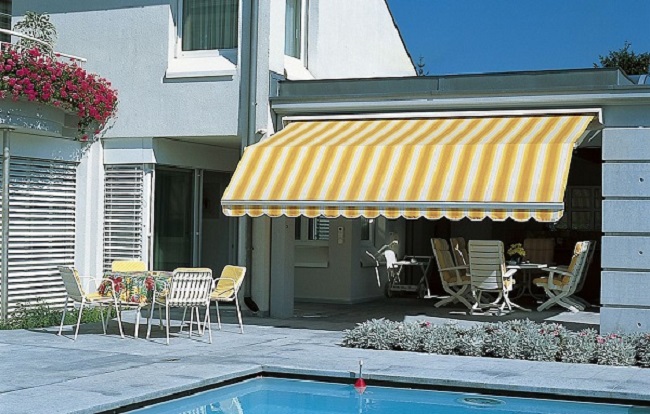
Have you ever wondered why awnings are so popular in homes and buildings? Does their value extend beyond mere aesthetic appeal? Moreover, do they have an effect on a structure's energy efficiency? These are the questions we'll explore today as we delve into the complex world of awnings and their role in energy conservation.
Awnings are as functional as they are beautiful. They add a distinctive architectural element to any structure while simultaneously offering respite from the elements. Yet, the benefits of awnings travel much deeper than their visual appeal or immediate functionality- they play a pivotal role in a building's energy efficiency as well. This underappreciated exterior shading device can significantly lower energy costs by influencing heat gain and loss in structures, a fact often overlooked in its myriads of qualifications.
Today, we will dissect the role of awnings in energy efficiency. We will delve into the ‘why,’ the ‘what,’ and the ‘how’ of awnings and energy efficiency, evaluating both the benefits and potential drawbacks.
The Science Behind It: Understanding Awnings and Heat Gain
Why do awnings matter in terms of energy consumption? The answer lies in the understanding of heat gain in buildings. Heat gain refers to the increase in thermal energy within a space, often leading to the excessive use of air conditioning systems. Awnings mitigate this heat gain through shade, thereby contributing to energy efficiency.
Awnings, simple in design yet profound in impact, influence a building's thermal input by blocking direct sunlight from windows and other openings. This attribute, in turn, limits solar heat gain, cooling the immediate environment naturally, and reducing the need for mechanical cooling systems. The result? Lower electricity bills and more environmentally friendly homes.
Fabric Matters: The Role of Material in Energy Efficiency
What kind of awning material aids in energy efficiency? The answer depends on the primary consideration of reflection, absorption, and emission of solar radiation. Today's market offers an array of materials, each with different levels of energy efficiency, durability, and aesthetic appeal.
Fabrics like canvas and acrylic use lighter colours to reflect more sunlight, thereby reducing heat absorption. However, materials such as metal and plastic laminate demonstrate superior durability and may offer better long-term value despite less heat reflection. Ultimately, the choice should strike a balance between aesthetic appeal, durability, and energy efficiency.
Your Location Dictates Efficiency
When considering awning installation, where you live and which direction your windows face plays a key role in how effective your shade device will be. Awnings work best on west and east-facing windows, where the sun's glares are the strongest. Moreover, homes in warmer climates accrue larger benefits from awnings, as the heat reduction impact is more pronounced.
Unveiling The Positives and Negatives of Awnings
A primary benefit of awnings is their reduction of summer heat gain, leading to substantial energy savings. They also provide newfound living areas by protecting outdoor spaces from sun and rain. On the flip side, poorly designed or installed awnings may block out winter sunlight that usually warms up the house naturally or may not hold up against harsh weather conditions.
Quality Installation for Optimal Efficiency
Who should install your awnings? For optimal efficiency and safety, a trained professional should oversee the installation. Correct pitching, fitting, and material choice are instrumental in ensuring your awning serves its intended purpose.
Looking Ahead: The Future of Awnings
With growing awareness of greener living and sustainability, we can expect advancements in awning designs aiming for higher energy efficiency. Technological improvements may offer materials with better heat reflection and emission properties, and more adaptable designs to accommodate seasonal changes will likely be commonplace.
Conclusion
Awnings, on the surface, may appear as mere accessories to the aesthetic charm of a building. But they are much more - they are gatekeepers of energy consumption, controlling heat gain to deliver cooling benefits and reduced energy costs. The effectiveness of these attributes, coupled with proper selection and installation, champions awnings as a pivotal design consideration for those championing sustainable living. As the values of the green lifestyle permeate deeper into society, it's safe to assume that the role of awnings in energy efficiency will continue to garner attention in the years to come.



.png)



0 comments:
Post a Comment
Note: only a member of this blog may post a comment.